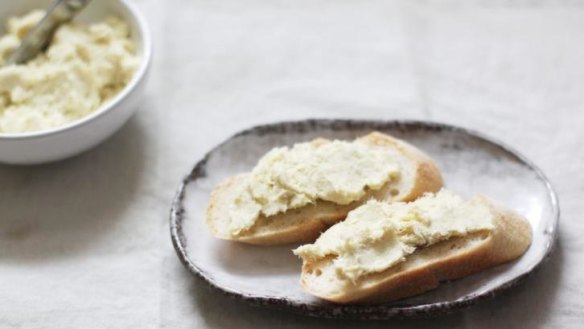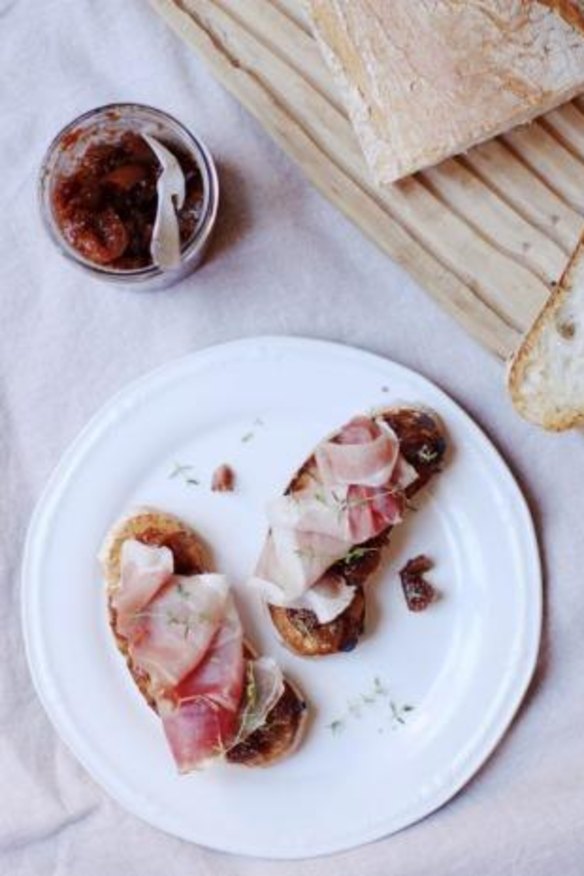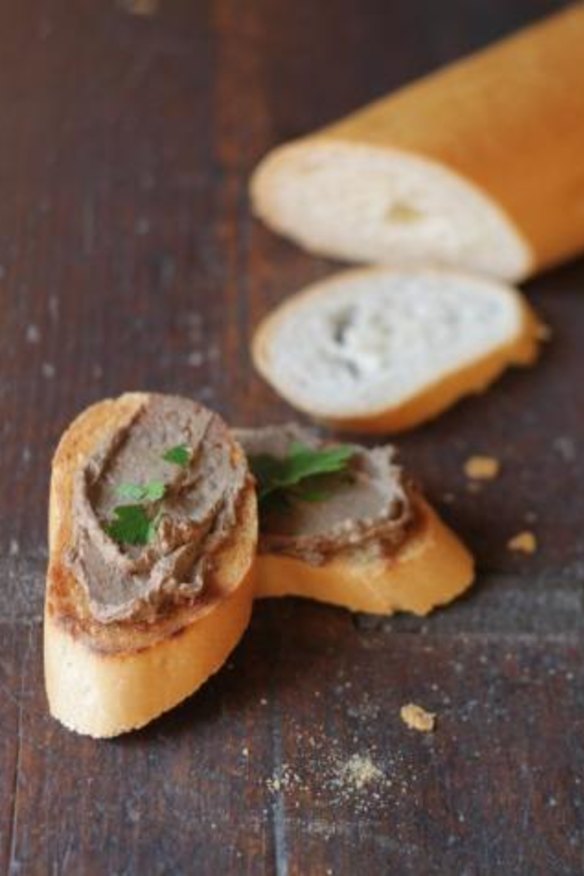Crostini to ease the winter blues
Crostini make great entrees and are essential to an antipasti platter. <b>Emiko Davies</b> shares three lovely recipes.

Crostini – slices of grilled crusty bread or baguette with various toppings – make great starters and are an essential part to any antipasti platter. They also make great use of day-old bread, which is ideal for making crostini as the bread should be toasted in the oven to dry out a little but not necessarily colour. Alternatively, if you have a grill pan, you can grill the bread slices on the stove top.
Crostini with prosciutto and fig compote
This recipe came about when I was wishing it was fig season so that I could eat thick slices of very ripe, jammy fresh figs, with ribbons of prosciutto. But that same delightful pairing of salty prosciutto with sweet fruit can be enjoyed with this fig compote. Made with dried figs, this compote is a simple preparation that can be made at any time of the year and also goes very well on a cheese platter to pair with sharp cheeses and blue cheese.

Makes 4 crostini
4 slices of crusty bread
4 long, thin slices of prosciutto

4 tbsp of fig compote (recipe follows)
Sprigs of fresh thyme (optional)
For the fig compote:
100g of dried figs
a dash of vin santo or other dessert wine
pinch of salt
1 litre boiling water
a few sprigs of herbs such as thyme or rosemary
Place the figs and vin santo in a large bowl, cover with 1 litre of boiling water and let soak until the figs are plump for about 1 hour or even overnight. Remove the figs, reserving the liquid, and chop into 1cm wide pieces. Place the figs and the soaking liquid in a saucepan and bring to the boil. Add a pinch of salt and the herbs and simmer until the mixture thickens, about 20 minutes. Remove the herbs and keep the mixture in a jar, sealed, and in the fridge once opened.
To prepare the crostini, toast 4 slices of bread in the oven to dry them out a little so they become crisp. Place one tablespoon of fig compote on the crostino, followed by a slice of prosciutto. If desired, scatter some fresh thyme over the top and serve.
Crostini with chicken liver pate
Arguably the defining Tuscan antipasto, chicken liver pate crostini, known as crostini di fegatini, is a constant on the menus of every trattoria in the region, not to mention the tables of every special occasion. They are delicious when made with vin santo, Tuscan dessert wine, but if unavailable, you can use marsala, white wine or chicken stock instead.
Serve them together with a charcuterie platter, perhaps with some paper-thin slices of prosciutto, finocchiona (a fennel seed studded large, soft salame) or other salumi and wedges of pecorino cheese. Wash it all down with a good chianti and you're halfway to Florence.
Makes enough for about 20 crostini
1 medium onion, chopped finely
1 tbsp olive oil
2 tbsp butter
2 fillets of anchovies, drained of oil
5 capers, rinsed and pat dry
500g of chicken livers
100ml vin santo (or Marsala, white wine or stock)
salt and pepper
1 baguette, sliced into rounds and dried out in the oven
In a wide skillet, cook the onion gently in the olive oil and 1 tablespoon of butter until soft and translucent. Add the capers and anchovies and continue to saute until the anchovies melt down. Add the chicken livers and saute until browned on all sides, then add the vin santo. Cook on low, uncovered, for about 30 minutes, adding water if necessary to keep the mixture moist. Season with salt and pepper and add a tablespoon of butter. Transfer the hot mixture to a food processor or blender and blend until mostly smooth (or all smooth, if you prefer that consistency).
Place heaped tablespoons of the pate onto the bread and serve. These are undoubtedly best served warm but room temperature is fine too.
Baccala mantecato
Baccala or dried Atlantic cod (also known as stockfish), soaked, poached and whipped until mousse-like, spread on a slice of baguette or grilled polenta is obligatory for a taste of Venice.
The technique for making a successful baccala mantecato is much like making mayonnaise - a slow dribble of olive oil a little at a time with one hand, while the other beats like mad. Of course, you can do it with a mixer, but purists (who prefer a wooden spoon) will say the metal blade affects the flavour and texture.
Served with some slices of baguette (or grilled polenta slices for a more traditional presentation), it needs nothing more than a sprinkle of chopped parsley and a glass of something sparkly.
Makes about 2 cups
700 gr pre-soaked baccala (available in Italian delis, often frozen)
2 garlic cloves
1 bunch parsley
½ cup or 120 ml olive oil
salt and pepper to taste
slices of baguette, to serve
Place the baccala in a large saucepan and cover with cold water. Bring to the boil and simmer for 15 minutes or until tender (test by pricking with a fork, if it's not giving, give it a little more time).
Drain the fish, reserving a little of the water if needed later. Remove the garlic, skin and any large bones. Break apart the fish and place in a bowl (or your mixer if using). Then, while the fish is still hot, begin whipping to break apart the fish with a whisk or, if you're going old-school, a wooden spoon. At the same time, add the olive oil in a thin, slow drizzle and continue whipping until you have a creamy, mousse-like consistency, with some larger pieces here and there. This is easiest done with two people, but if not, just pause every now and then to dribble the olive oil. You may need a little more olive oil, you may find you don't need all of it. You might even need a little of the cooking water if you find it is too dry or too dense. This all really depends on the quality of the stockfish and how long it was soaked for prior to cooking. Season to taste with salt and pepper.
The best recipes from Australia's leading chefs straight to your inbox.
Sign up